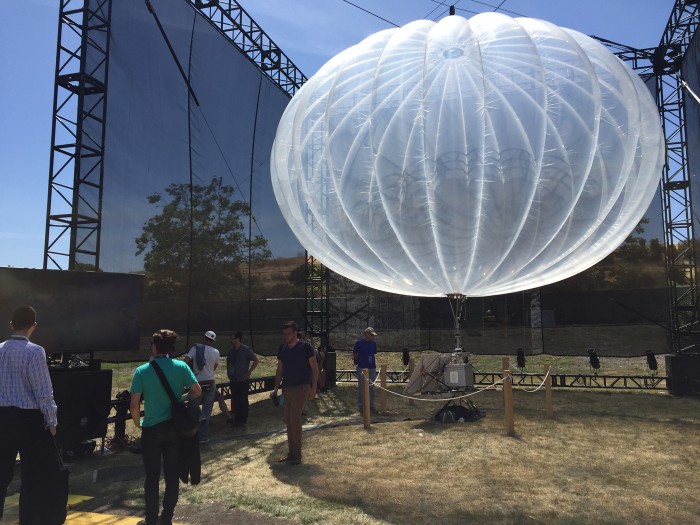AI Is Taking Control of Project Loon
Google’s giant white Internet-delivering balloons have been floating through the skies for several years now. And because they’ve been collecting data on how best to pilot them all the while, the company has now decided to let artificial intelligence take control.
Wired reports that the engineering team behind Google’s Project Loon is going to move away from using control algorithms that are hard-coded, and instead use machine learning to understand how best to stick to a desired flight path.

Navigating a balloon through the stratosphere autonomously is a very different task from getting a car to drive through a city by itself. For starters, there’s only one way to control the balloons: pump a little extra air in or out in order to have the balloon rise or fall. That’s it. And with weather conditions in the stratosphere often creating a rough ride, there’s large scope for error.
But an AI system can keep analyzing new data to improve how to react to conditions in a way that a hard-coded algorithm can’t, comparing the actual flightpath to the intended one for a given decision. And that kind of automation also frees the team up to work on other problems.
Like, for instance, the huge amounts of red tape that seem to be getting in the way of using these kinds of aircraft to deliver Internet connections. Facebook is also coming up against similar legal problems with its huge solar-powered drone, and in fact both companies are working together to surmount the issue. But they’ll need more than AI to solve that problem.
(Read more: Wired, “Alphabet and Facebook’s Stratospheric Internet Plans Get Tangled in High-Altitude Red Tape,” “Project Loon,” “Project Loon Head Details How the Balloons Interact”)
Keep Reading
Most Popular
Large language models can do jaw-dropping things. But nobody knows exactly why.
And that's a problem. Figuring it out is one of the biggest scientific puzzles of our time and a crucial step towards controlling more powerful future models.
The problem with plug-in hybrids? Their drivers.
Plug-in hybrids are often sold as a transition to EVs, but new data from Europe shows we’re still underestimating the emissions they produce.
Google DeepMind’s new generative model makes Super Mario–like games from scratch
Genie learns how to control games by watching hours and hours of video. It could help train next-gen robots too.
How scientists traced a mysterious covid case back to six toilets
When wastewater surveillance turns into a hunt for a single infected individual, the ethics get tricky.
Stay connected
Get the latest updates from
MIT Technology Review
Discover special offers, top stories, upcoming events, and more.